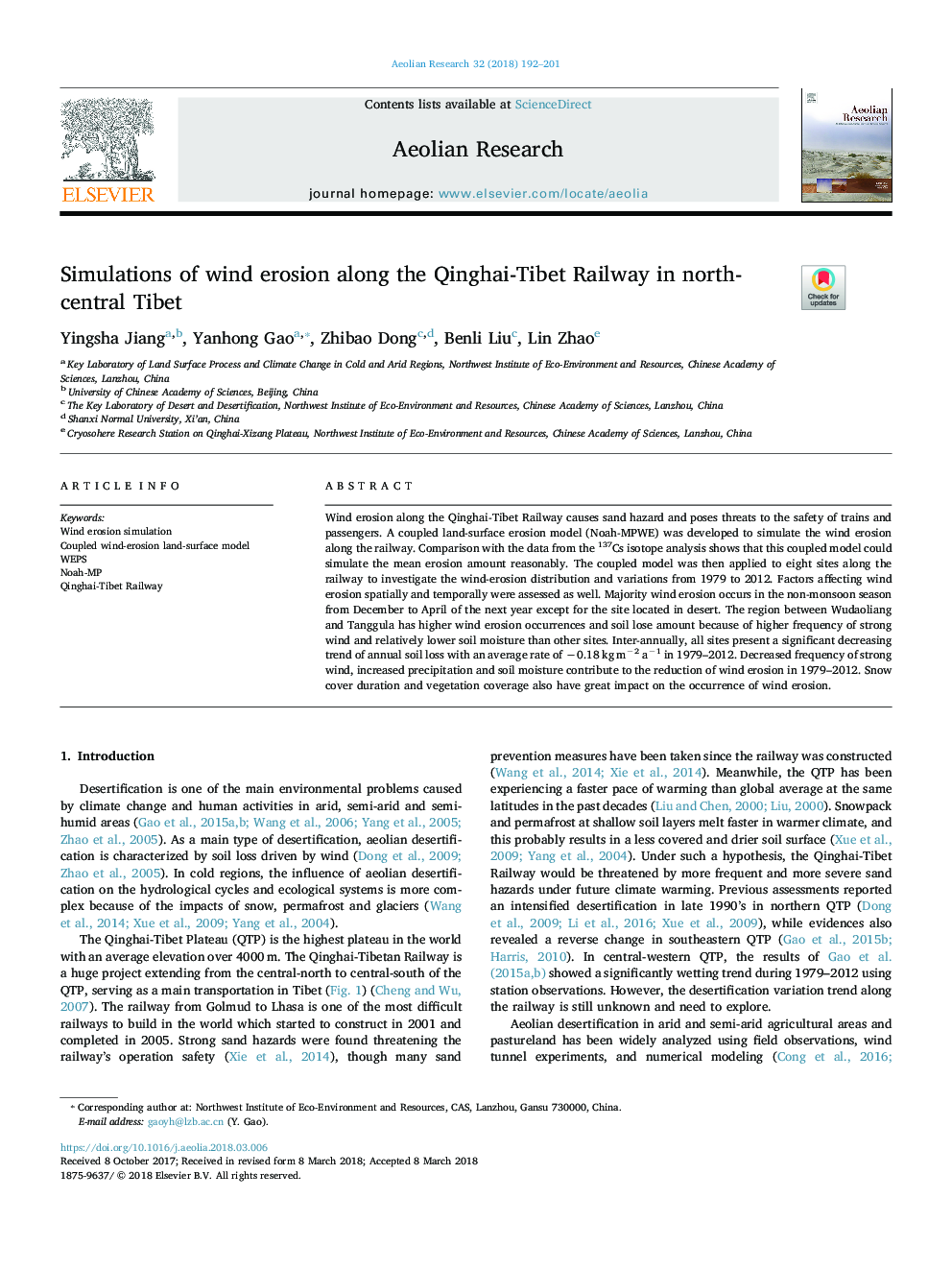| Article ID | Journal | Published Year | Pages | File Type |
|---|---|---|---|---|
| 8906254 | Aeolian Research | 2018 | 10 Pages |
Abstract
Wind erosion along the Qinghai-Tibet Railway causes sand hazard and poses threats to the safety of trains and passengers. A coupled land-surface erosion model (Noah-MPWE) was developed to simulate the wind erosion along the railway. Comparison with the data from the 137Cs isotope analysis shows that this coupled model could simulate the mean erosion amount reasonably. The coupled model was then applied to eight sites along the railway to investigate the wind-erosion distribution and variations from 1979 to 2012. Factors affecting wind erosion spatially and temporally were assessed as well. Majority wind erosion occurs in the non-monsoon season from December to April of the next year except for the site located in desert. The region between Wudaoliang and Tanggula has higher wind erosion occurrences and soil lose amount because of higher frequency of strong wind and relatively lower soil moisture than other sites. Inter-annually, all sites present a significant decreasing trend of annual soil loss with an average rate of â0.18â¯kgâ¯mâ2â¯aâ1 in 1979-2012. Decreased frequency of strong wind, increased precipitation and soil moisture contribute to the reduction of wind erosion in 1979-2012. Snow cover duration and vegetation coverage also have great impact on the occurrence of wind erosion.
Keywords
Related Topics
Physical Sciences and Engineering
Earth and Planetary Sciences
Atmospheric Science
Authors
Yingsha Jiang, Yanhong Gao, Zhibao Dong, Benli Liu, Lin Zhao,
